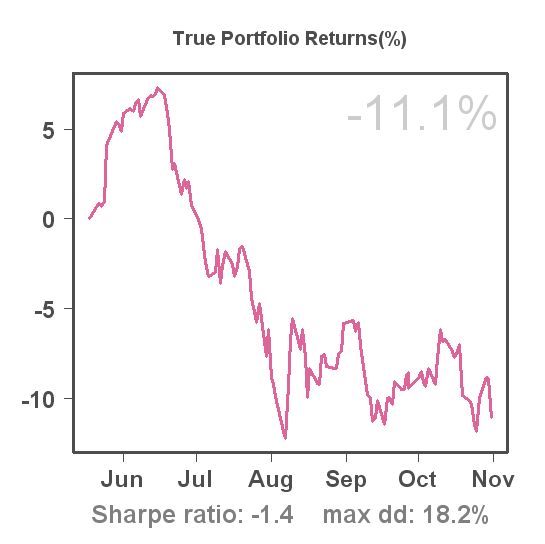Weekend Trader Distribution of Trade Returns
Today, Weekend Trader closed two positions for a very nice return, both about 46%. Because the system always initiates trades with 25% of equity (4 open positions at any point in time), the two positions combined added 23% to the equity of the system.
Obviously the question is, how often can we expect to celebrate such nice trades? And, what is the chance of even larger profits? And, finally, what are the chances the system will close a trade for a 46% loss.
Over the coming weeks I will attempt to address these questions, by looking into the distribution of the trade returns of some systems, including Weekend Trader. To kick it off, let's look at a histogram of the Weekend Trader returns per trade.
The total number of trades since inception was 72 and most (29) of them yielded between zero and 2% on equity (i.e. between zero and 8% on the trade itself). The small bar at the far right represents a trade with a return of 16.7% on equity (66% on the trade itself) on a position in TFR held during the first half of 2006. The next bar (counting from the right) represents the two recently closed trades I described earlier.
The average of the return on equity (i.e. the expected return in statistics lingo) is 1.15% and the standard deviation is 3.54%. As a comparison, I plotted the normal distribution with this mean and standard deviation (red line). Visual inspection shows that the Weekend Trader returns are not normally distributed, as the peak is higher and the tails are heavier. This is confirmed by the 3rd and 4th moments of the distribution, i.e. the returns have a skewness of 1.85 and kurtosis of 5.29, while both are zero for the normal distribution.
Why is it important to note that the returns are not normally (Gaussian) distributed? Well, if they were, we could predict the probability and size of extreme returns quite easily. For example, we could predict that 95% of the returns fall within a range of ~2 standard deviations below and above the mean. However, if the returns are not normally distributed, such predictions can be misleading and (in this case) underestimate the chance of an extreme (positive or negative) return.
What I appreciate a lot in these returns, is that the extreme values all appear on the positive end of the distribution (and of course, I like extremely large returns). On the negative end, the bars of the histogram are all lying below the normal distribution, which is very good.


2 comments:
> the extreme values all appear on the positive end of the distribution
with fewer than 100 trades as a basis, it is simply not possible to say something about the "rare events" in the tails of the distribution. I'd say it is pure *luck* that the extremes were positive up to now. Future will tell...
Hi Rene,
I think if the "true" distribution would show an equal amount of mass at both the positive and negative end of the tails, skewness would be zero rather than positive.
However, the 95% confidence interval (CI) around the skewness appears to be (0.987, 2.995), the 99% CI is (0.565, 3.414) and thus negative or zero skewness would be highly unlikely. So, at least in a statistical sense, the positive skew is unlikely to be due to luck.
Of course, there's always the possibility that general market conditions during the past two years were not representative, but that's more a problem of a limited number of years rather than having a limited number of trades during those years.
Post a Comment